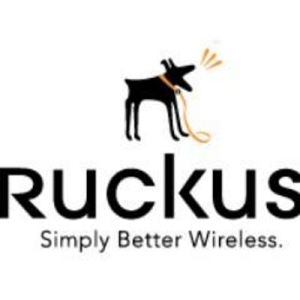What is our primary use case?
One service provider offered a managed Wi-Fi solution using Ruckus Wireless. They used Ruckus to offer managed Wi-Fi solutions. The clients install Ruckus for their clients, like hotels and offices.
How has it helped my organization?
Ruckus is primarily an enterprise solution. It might be suitable for remote office scenarios, but it is not typically used for home offices. Its price point and capabilities make it less practical for home use.
What is most valuable?
Ruckus Wireless WAN is highly regarded for managing network performance. They have simplified the configuration and installation processes, making it straightforward. It works out of the box; you just configure it, and there's minimal need for minor adjustments. However, if you're managing a large venue with thousands of people, such as 2,000 attendees, you might need to do some additional tweaking to optimize the network.
It is 99% reliable.
What needs improvement?
Sometimes, you can't do everything you need on the GUI. Some configurations can only be done through the CLI. It would be nice if everything could be managed through the GUI. Another consideration is the price. Clients are very cautious with their budgets. A few are willing to pay for the best quality without compromising the WAN. While Ruckus Wireless offers excellent quality, the price point can be high. Special registration discounts are available, but the product can be expensive.
For how long have I used the solution?
I have been using Ruckus Wireless WAN as a system integrator for over ten years.
What do I think about the stability of the solution?
I have not had any issues with Ruckus Wireless WAN's ability as long as the provisioning is done correctly. For high-volume areas with many users, such as a board room or an auditorium with around five hundred people, it's essential to use an appropriate access point model. For instance, an R350 wouldn't be suitable for such high-density environments. It remains reliable as long as the access point deployed matches the expected number of users.
The only issue would arise if an entry-level access point is placed in a high-density area, causing latency issues and network slowdown.
What do I think about the scalability of the solution?
There's a newer model now. You can start with ten access points with five licenses. So it's flexible. You pay as you grow. The model is quite nice because they were bundling the licenses when they started out. Now, it's one license per access point to scale slowly. The SmartZone can support up to a thousand access points, which is more than adequate for most needs.
Scalability is a significant advantage because you don't have to spend more money changing the controller. We've not had any issues with clients because it's easy to explain: if you have ten access points, you buy ten licenses. It's straightforward. If you need to add another five, add five more licenses as you grow.
How are customer service and support?
Support is very efficient. I have no issues. The only condition is that you have to have a paid support license.
How would you rate customer service and support?
How was the initial setup?
Setting up Ruckus Wireless WAN involves pulling cables and mounting the access points according to the required number. However, configuring the system is straightforward, and it takes about five minutes to set up a basic Wi-Fi network. Integrating with systems like Active Directory or other servers might take longer.
Mounting the access points requires technicians capable of climbing ladders and handling cables. One trained engineer is sufficient for the actual device configuration.
What's my experience with pricing, setup cost, and licensing?
The price could be reduced a bit. The SKUs or part numbers come with a one-year support option and a five-year support option. Depending on the budget, the client can choose the one-year option. With one year of full support, clients receive immediate assistance if anything breaks. They can renew this support every year.
Which other solutions did I evaluate?
IBM has a wide range of equipment. They don't only deal with Wi-Fi but also offer switches and point-to-point, point-to-multipoint solutions. However, Cisco stops at switches and offers only controllers and Wi-Fi access points.
What other advice do I have?
I have handled four RMAs where something was faulty, which added about twenty bucks. I have had clients who insisted that there was no need to change the equipment I installed five years ago because it is still working. This demonstrates the reliability of Ruckus Wireless WAN.
Ruckus offers a free controller version, which sets it apart. The price point is low. For example, if you compare a Wi-Fi 6 access point to Aruba's equivalent, the price would be lower.
The most important lesson is conducting a proper WAN site survey and correctly designing the network. When these steps are done correctly, the chances of having issues are minimal. If any issues do arise, they are usually minor teething problems.
Overall, I rate the solution a ten out of ten.
*Disclosure: My company has a business relationship with this vendor other than being a customer. Reseller









